9915 AN EXTREMELY RARE PAIR OF WAX SCULPTURES OF GENTLEMEN DRESSED IN THEIR ORIGINAL APPAREL Probably French. Circa 1785. Measurements: Figure in red: Height: 26” (66 cm) Width 9”(23 cm). Figure in ocher: Height: 28” (71 cm) Width 10” (25 cm).
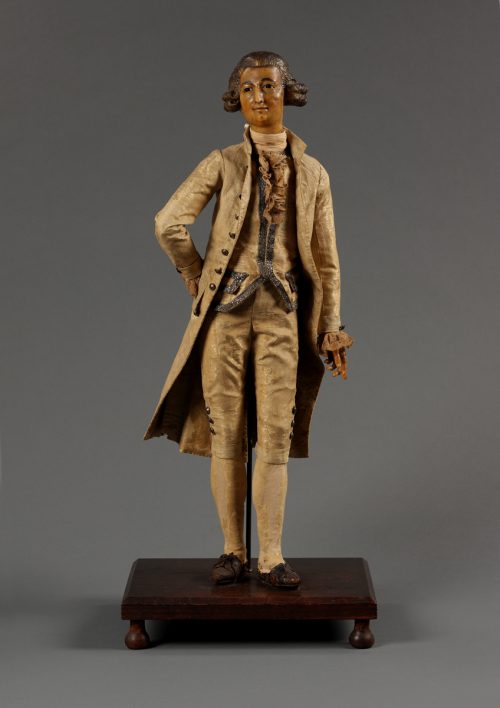
Research
Of wax, silk, silver thread, leather and oak. One gentleman dressed in an ocher colored long coat with floral embroidered waistcoat, beige culottes with beige stockings, and leather shoes. The second figure in the act of oration is dressed in a red long coat with silver embroidered trimming and buttons with culottes, beige stockings and leather shoes, and holding a later paper scroll. Restoration to nose of red figure and to the fingers and leather shoes of both. Old repairs to bodies, textiles all original and carefully conserved. Oak stands original.
The art of wax modeling can be traced back to the Middle Ages, when it was used for effigies, death masks and portrait miniatures. In Renaissance Italy, the cities of Florence, Venice and Naples were among the first centers to recognize the possibilities of using wax to imitate human flesh, arguably one of the earliest instances of hyper-realism in art. Some of these studies were portrayed with terrifying naturalism such as a Cadaver in Decomposition by the Neapolitan Gaetano Guilio Zummo, circa 1695. In later centuries, busts or life-size portraits were created from this pliable material, as were anatomical models, a practice known as moulage.
In the late eighteenth century in France realistic wax modeling would take on an entirely new purpose. The commercial possibilities of the medium were first realized by a physician, Philippe Curtius (1737-1794). Working in his hometown of Berne in Switzerland, he had built up considerable experience and skill creating anatomical models of the kind mentioned above. His models were so remarkable that the Prince de Conti, on seeing the small museum Curtius had established, persuaded him to travel to Paris.1 Conti was an enlightened member of the French Royal Family, who maintained a lively salon of contemporary artists and philosophers such as Jean-Jacques Rousseau. He also established a lodging house for artists on the Rue St-Honoré, where Curtius lived during his formative years in Paris.2 One of Curtius’ few surviving confirmed creations is a self-portrait, now at the Musée Carnavalet (figure 1).
Curtius’ first wax exhibitions were held in fairgrounds; his earliest permanent setting was at the St-Laurent fair close to the Temple, which was used to house a visitor attraction and to conduct a lively trade in private wax portraits. It is also recorded that a private trade in table-top miniatures in erotic poses was particularly successful.3 By 1787 Curtius had a more permanent establishment nearby at 20 Boulevard de Temple where he lived and made, dressed and stored his models. The visitor experience was divided into two sections; the Salon, full of the most distinguished and famous figures of the age, followed by the Caverne des Grands Voleurs which was presented in gory detail and was the ancestor of the modern “chamber of horrors.” In 1784 Curtius was one the earliest tenants in the rather more up-market setting of the Palais Royal, which had just been converted for commercial use. It would become one of the liveliest and most bustling centers of pre-revolutionary Paris with Curtius’ Salon de Cire (Wax) at its heart; recent academic enquiry has labeled it as “the greatest show in prerevolutionary Paris” and “the centre of a renaissance of marketplace culture.”4 The Salon de Cire was a considered title; the exhibition was intended to resemble an intellectual salon, of the kind led by Madame Geoffrin. It comprised elaborate tableaux, including a popular scene of the Royal Family eating their dinner (figure 2), as well as life-size single figures and many busts. The dinner tableau allowed visitors to examine in detail the arrangement of the table and the exquisite clothes of Queen Marie Antoinette, which were closely modeled on reality; Curtius paid Rose Bertin, the queen’s dressmaker, to recreate her favorite dresses. The exhibition was visited in 1784 by Mrs Cradock, an English tourist who was particularly impressed by a tableau of Voltaire, Rousseau, and Benjamin Franklin. She commented “the workmanship was so good that the very character of these famous, though baneful, men was conveyed by their appearance.”5
Alongside these three great worthies of the time, the show also featured others including Jacques Necker, popular finance minister to Louis XVI, the astronomer and mathematician Jean-Sylvain Bailly, the distinguished General Marie-Joseph Lafayette, and the Duc d’Orléans. Popular female figures included Louis XV’s mistress Madame du Barry and the actress Louise-Françoise Contat.6
According to his niece and successor, Marie Grosholz, later famous as Madame Tussaud, Curtius was at the center of a lively circle. She claimed that Voltaire, Franklin, Rousseau, the Comte de Mirabeau, the Duc d’Orléans and Marat were well acquainted with her and her uncle, and frequently dined with them. In 1778, not long before his death, Voltaire is recorded as visiting, when Marie took the opportunity to take his likeness. The subsequent model was set up in the Salon de Cire in a tableau at a desk surrounded by books. Frederick the Great, King of Prussia, was represented in the exhibition in his own clothes which he insisted on sending himself; the model was frequently noted as being considerably more scruffy than the others.7
Curtius’ associations with the great and good of European public life hint at the enormous popularity of wax modeling during the final decades of the ancien régime. The remarkable realism the medium offered chimed closely with the wider preoccupations of the Age of Enlightenment, and it was therefore little wonder that Curtius was apparently so close with some of its chief exponents.
The present models most certainly fit within this tradition. Both are wearing French outfits, including undergarments and finely knitted stockings, expertly recreated in miniature with remarkable skill and at considerable expense. Perhaps it is even possible to speculate that the figures have an association with Curtius; beneath their clothes the bodies are modeled with anatomical precision, and we have seen how Curtius was prepared to use actual tailors to recreate clothing for his models. We have also seen how, supplementary to his Salon de Cire, Curtius undertook a lively trade in portraits and table-top models. It seems likely that he may have been prepared to make miniature versions of those leading celebrities on display at his exhibition as a souvenir or collector’s piece for one of his wealthy customers.
Another possibility is that these were used as “fashion dolls,” referred to in England as “fashion babies.”8 Both figures are clothed in exquisitely made outfits; the figure in red has been confirmed by a curator at the Victoria and Albert Museum in London as wearing a garment “typical of French court attire of this period” (1780s). A remarkably similar figure, sold at Christies London in 1978 (figure 3) was also thought to be such a model, sent out from Paris by tailors to disseminate the latest vogues and encourage orders. In the decades before the French Revolution it is known that often two dolls would be sent out, one in court dress known and the other in a more casual outfit.9 It is possible that the present pieces are just such a pair. Fashion dolls “having been copied by the court dressmaker”10 were then shown in shop windows of the leading retailers of fashion on the Rue St Honoré in Paris, and were described by Louis Sébastian Mercier in his Tableau de Paris, published in the early 1780s: “the famous doll, the precious mannequin dressed in the newest fashions, which travels from Paris to London every month, and from there distributes its charms all over Europe. It goes to the north and south; it reaches Constantinople and St Petersburg; and the pleat created by a French hand is copied by all nations, humble observers of the taste of the rue Saint-Honoré.”11 It is possible that while serving to disseminate the latest vogue in dressmaking, the faces were purposely modeled after distinguished people of the time.
The red figure’s stance, gesturing hand, and open mouth suggest a man famed for his oratory, perhaps a politician. As we have seen above, politicians did feature as part of Curtius’ repertoire, and one is mentioned repeatedly; Jacques Necker (1732-1804), shown in figure 4 in a portrait by Joseph Duplessis circa 1781, is perhaps a candidate as a subject for this model. He was Minister of Finance to Louis XVI and became popular for his attempts to reform the French financial system. His attacks on the royal pensions system, the royal family’s spending, and the wider conduct of the nation’s financial affairs were published in his Compte Rendu, which would trigger his resignation in 1781. However, his popularity endured and the king was forced to re-employ him in 1788 in the desperate hope that he would be able to stabilize the French economy.
The other figure is, according to the V&A curator mentioned above, wearing a “fashionable rather than ceremonial suit.” It could be that this is a model of the most famous philosopher and enlightenment figure of the late-eighteenth century in France, Jean-Jacques Rousseau (1712 -1778). Maurice Quentin de La Tour had painted Rousseau in a portrait that had been exhibited at the Paris salon in 1753 (figure 5), which also presents the sitter wearing a grey wig and ocher suit. Although he died in 1778, some years before Curtius’ establishment in Paris, he remained a cause célèbre for the French enlightenment, and, as suggested above, remained one of the most popular attractions in the Salon de Cire right up until the revolution. In her memoirs, Madame Tussauds recounted how Rousseau “wore a short round wig with curls, something like that worn by George III, and what coachmen used to wear…he is generally dressed in a snuff-colored suit, very plain.”12
A fascinating contemporary engraving of January 1783 demonstrates the centrality of the wax museum in the public sphere of the time. It is entitled Changez moi cette tête, tête d’ancien gout / Avis au public, têtes à changer (“Change me that head, head of old-fashioned taste / Notice to the public, heads to change”) and shows a crowd in a space resembling Curtius’ Salon de Cire witnessing the unceremonious removal of certain wax heads from the display. This has been thought to be a reflection on the constantly changing fashions of the period, but surely it is also commenting on the capricious nature of public opinion. It presents the portentous idea that it is the public who decide who is to be revered and respected, and their opinion can change quickly. This is one of the very few caricatures to be mentioned by the Baron von Grimm in his famous Correspondance Littéraire, which was intended to keep foreign monarchs and aristocrats up to date with occurrences in Paris. Even when the political situation deteriorated in the months leading up to the revolution the wax heads of the Salon de Cire had their part to play. On the 12th July 1789 after Louis XVI had dismissed Necker as Finance Minister, the Paris mob stormed the museum to obtain the wax busts of Necker and the Duc d’Orléans, who at that time were regarded as saviors of the people. The busts were fastened to poles and held aloft, to be paraded through the streets of Paris. This event is also recorded in an engraving of the time that entitles it as ‘La Première Scène de la Revolution Français’ (figure 6).
It was of course Curtius’ niece, Marie Tussaud, whose name has gone on to become synonymous with waxworks of celebrity into the modern age. Inheriting the business after his death, she would derive much success and fame by exhibiting wax models, taken from life, of leading figures of the French Revolution in London. She was to become an astonishingly successful businesswoman, and would tour England with her waxwork show for 34 years, eventually housing her collection in a permanent space in Baker Street, London.
The quality of the figures’ modeling, their exquisitely made clothes, and their appearance strongly suggest an association with this great age of wax modeling in pre-revolutionary Paris, and they are a very rare survival from this time of a medium so fragile, still dressed in their original apparel.
Footnotes:
- Pamela Pilbeam, Madam Tussaud and the History of the Waxworks, London 2003, p. 17.
- Ibid., 17.
- Archives Nationales, Z1J1169
- L.S. Isherwood, Farce and Fantasy, Oxford 1986, p. 161
- A. F. Cradock, Journal de Madame Cradock: Voyage en France 1783-1786, Paris 1986, pp. 59-60
- Roberta Panzanelli (ed.), Ephermeral Bodies: Wax Sculpture and the Human Figure, Los Angeles 2008, p. 68
- Pilbeam, op. cit., p. 29
- Aileen Ribeiro. Dress in Eighteenth-Century Europe 1715-1789. London: Batsford, 1984. p.52.
- Ibid., 51.
- Ibid.
- Ibid.
- Marie Tussaud, Memoirs of the French Revolution, London 1839, p. 30.


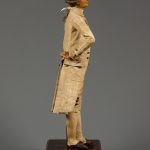
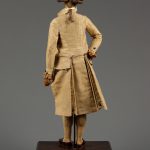

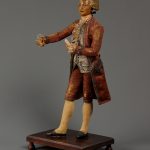
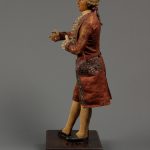


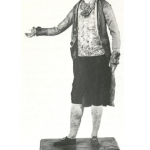
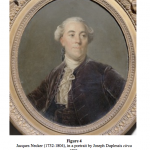
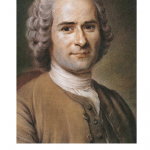
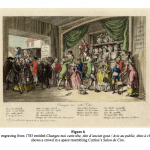

Comments are closed.